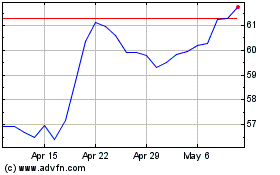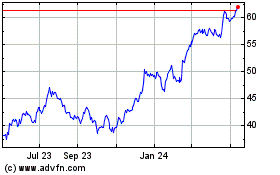By James R. Hagerty
This article is being republished as part of our daily
reproduction of WSJ.com articles that also appeared in the U.S.
print edition of The Wall Street Journal (July 22, 2017).
As chief executive of Wells Fargo & Co., Carl Reichardt said
he thought of himself "not as a banker but as a businessman who
happens to be running a bank."
The typical banker, he said in a 1994 interview with the Los
Angeles Times, "has the mind-set of a civil servant, in terms of
cost control and having a guaranteed income for life."
Not for him were other bankers' palatial offices or private-jet
jaunts to mingle with princes and pop stars.
Mr. Reichardt, CEO from 1983 to 1994, declared war on costs in
ways big and small. He sold the corporate jet and at one meeting
demanded to know why it was necessary to put the documents being
discussed into ring binders when paper clips would do. He banished
potted plants and underperforming employees.
After pulling the bank out of Latin American lending and other
overseas entanglements, Mr. Reichardt focused on California, which
he called "the best banking market in the world." When he retired
at the end of 1994, the bank calculated that its total returns to
shareholders during his reign had been more than four times the
S&P 500 average. Warren Buffett's Berkshire Hathaway became a
major shareholder on his watch.
Colleagues said Mr. Reichardt excelled at assessing credit
risks. It helped that he got up early -- often after sleeping only
five hours or so. Though he could be gruff, underlings knew where
they stood.
Mr. Reichardt died July 13 of what his family said was a long
illness. He was 86.
Carl Edwin Reichardt was born July 6, 1931, in Houston, where
his father worked as a hotel manager. By age 12, Carl was working
in a lumber yard. He enlisted in the Navy during the Korean War and
was stationed in Long Beach, Calif., then earned an economics
degree at the University of Southern California.
One of his early banking jobs was at Union Bank of California,
headed by Harry J. Volk. "Harry called me in one day," Mr.
Reichardt said in a 1989 interview with the New York Times, "and he
told me, 'Carl, you may be a great banker, but you've got to learn
to sell.' Most bankers had the idea, you sit there and customers
come in and you sort of judge them. Harry said that was all wrong,
that you had to go out and drag them in."
In 1970, he joined Wells Fargo, where he rose to president in
1979 and CEO in 1983. The bank's 1986 acquisition of Crocker
National Corp. for $1.1 billion was a chance to slash costs by
eliminating overlaps.
Heavy lending to commercial real-estate companies led to a
plunge in profit in the early 1990s when California's property
market tanked. The bank survived that storm, and analysts said it
had been more careful than many rivals in sizing up loan risks.
On weekends, Mr. Reichardt brought work home in a cardboard box
that he called "my Gucci." During the energy crisis of the 1970s,
he urged his children to switch off lights promptly and promised to
share with them any savings in the electric bill.
Mr. Reichardt yearned to take over another California bank,
First Interstate Bancorp, but executives there rebuffed him. "I was
out there on the dance floor with my rouge on, but nobody came
out," he said in a 1994 interview.
In 1996, after he retired, Wells Fargo finally acquired First
Interstate in a hostile takeover, then struggled to combine the two
operations, losing some customers annoyed by poor service during
the integration. In 1998, a bruised Wells Fargo merged with Norwest
Corp.
Some of Mr. Reichardt's imprint remains. Tim Sloan, Wells
Fargo's current CEO, said his office still contains some of the
"same ratty chairs" that were there in the early 1990s. "When we
talk about changing furniture, I think, if Carl was here, he'd be
fine with" the old furnishings, said Mr. Sloan.
Mr. Reichardt's retirement was interrupted in 2001 when he
became vice chairman of Ford Motor Co., where he spent about two
years helping to sort out the auto maker's consumer-credit
business.
In his spare time, he read about history. He is survived by his
wife of 63 years, Patricia, three children and six
grandchildren.
"Work is not a pejorative," he often said.
Write to James R. Hagerty at bob.hagerty@wsj.com
(END) Dow Jones Newswires
July 22, 2017 02:47 ET (06:47 GMT)
Copyright (c) 2017 Dow Jones & Company, Inc.
Wells Fargo (NYSE:WFC)
Historical Stock Chart
From Mar 2024 to Apr 2024

Wells Fargo (NYSE:WFC)
Historical Stock Chart
From Apr 2023 to Apr 2024
